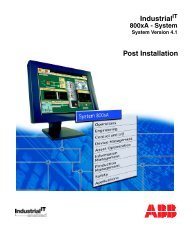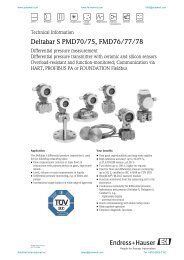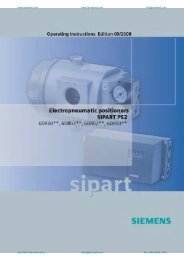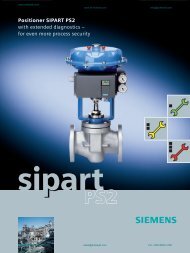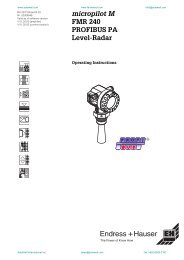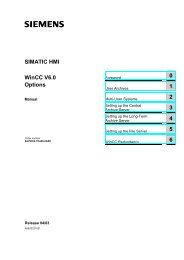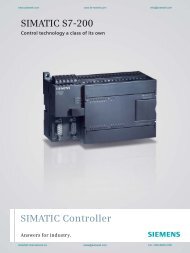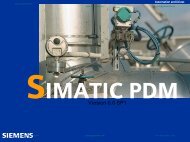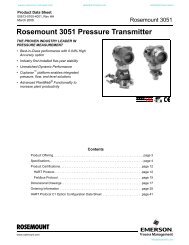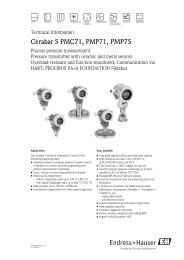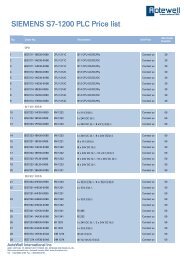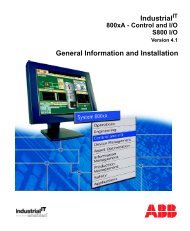Level-Radar micropilot M FMR 230/231/240
Level-Radar micropilot M FMR 230/231/240 - from AoteWell
Level-Radar micropilot M FMR 230/231/240 - from AoteWell
- No tags were found...
Create successful ePaper yourself
Turn your PDF publications into a flip-book with our unique Google optimized e-Paper software.
www.aotewell.com www.fa-market.com info@aotewell.com<br />
Micropilot M<br />
Function and system design<br />
Measuring principle<br />
The Micropilot is a "downward-looking" measuring system, operating based on the time-of-flight<br />
method. It measures the distance from the reference point (process connection) to the product<br />
surface. <strong>Radar</strong> impulses are emitted by an antenna, reflected off the product surface and<br />
received again by the radar system.<br />
L00-<strong>FMR</strong>2xxxx-15-00-00-en-001<br />
Input<br />
The reflected radar impulses are received by the antenna and transmitted into the electronics.<br />
A microprocessor evaluates the signal and identifies the level echo caused by the reflection of the<br />
radar impulse at the product surface. The unambiguous signal identification is accomplished by<br />
the PulseMaster software, based on many years of experience with time-of-flight technology.<br />
The mm-accuracy of the Micropilot S could be achieved with the patented algorithms of the<br />
PhaseMaster software.<br />
The distance D to the product surface is proportional to the time of flight t of the impulse:<br />
D = c · t/2,<br />
with c being the speed of light.<br />
Based on the known empty distance E, the level L is calculated:<br />
L = E – D<br />
Refer to the above figure for the reference point for "E".<br />
The Micropilot is equipped with functions to suppress interference echoes. The user can activate<br />
these functions. They ensure that interference echoes (i.e. from edges and weld seams) are not<br />
interpreted as level echo.<br />
Output<br />
The Micropilot is commissioned by entering an empty distance E (=zero), a full distance F (=span)<br />
and an application parameter. The application parameter automatically adapts the instrument to<br />
the measuring conditions. The data points “E” and “F” correspond with 4mA and 20mA for<br />
instruments with current output. They correspond with 0 % and 100 % for digital outputs and the<br />
display module.<br />
A linearization, based on a table entered either manually or semi-automatically, can be activated<br />
locally or remotely. This function provides a measurement in engineering units and a linear output<br />
signal for spheres, horizontal cylindrical tanks and vessels with conical outlet.<br />
2 Endress+Hauser<br />
AoteWell International.inc sales@aotewell.com Tel: +852-6563-2160



